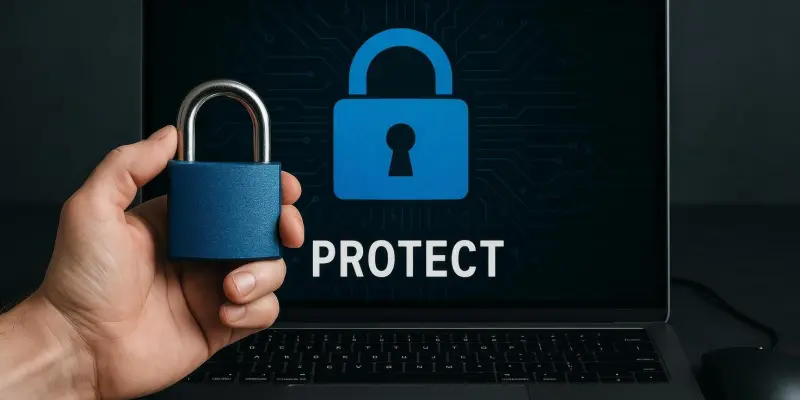In recent years, the rise of ransomware attacks has become a formidable challenge for organizations globally. Such attacks, targeting vulnerabilities in software systems, have significant consequences, often resulting in compromised sensitive data and financial losses. A pertinent example is the indictment of a Yemeni national, Rami Khaled Ahmed, who orchestrated a cyberattack using the Black Kingdom ransomware. This specific attack exploited vulnerabilities in Microsoft Exchange servers, striking approximately 1,500 computers worldwide. The ransomware encrypted victims’ files and demanded a ransom of $10,000 in Bitcoin, showcasing the severe implications of unpatched systems and inadequate cybersecurity measures.
The Technological Complexity of Ransomware
The Role of Coding and Encryption in Ransomware Attacks
Black Kingdom, developed in Python, exemplified a technology-driven threat that was both sophisticated and accessible, making it particularly dangerous. Its design allowed it to encrypt files with random extensions such as “.DEMON,” a tactic that substantially impeded decryption efforts. Although its coding exhibited a lack of safeguards against multiple encryptions, this deficiency further complicated recovery processes for its victims. Moreover, while some individuals and organizations complied with ransom demands in hopes of regaining access, a limited number of transactions suggested a low overall success rate for the perpetrators.
Moreover, the ransomware refrained from encrypting essential system folders, a characteristic that might seem lenient but effectively compromised the integrity of crucial data by risking re-encryption efforts. In addition to the encryption of files, it attempted to delete system logs, aiming to impede detection and analysis. Such technical maneuvers highlight the multifaceted nature of ransomware, leveraging coding intricacies to maximize disruption and economic gain while maintaining layers of anonymity and difficulty in tracking cybercriminal activities.
Impact on Organizations and Broader Implications
The consequences of ransomware attacks often extend beyond immediate financial and data losses, leaving a lasting impact on victimized organizations. Notable victims of Black Kingdom, such as a medical billing company and a school district, experienced disruptions in operations, illustrating the dire ramifications for institutions relying heavily on digital infrastructure. The attack underscored the urgent need for robust cybersecurity practices, as these incidents not only incur immediate damage but also potentiate long-term reputational and financial harm.
For targeted institutions, the attack exposed deficiencies in existing cybersecurity frameworks, prioritizing the urgency of fortifying defenses against similar threats. The necessity for organizations to promptly address system vulnerabilities, employ host-based monitoring tools, and adhere to rigorous data backup protocols becomes increasingly evident. These preventative measures are essential not only in counteracting ransomware but also in fostering a culture of cybersecurity awareness that is paramount for organizational resilience.
Legal & Proactive Measures Against Ransomware
International Efforts and Legal Pursuits
In response to the cyber threats posed by perpetrators like Rami Khaled Ahmed, international efforts have intensified to track and apprehend cybercriminals. Ahmed, facing charges of conspiracy and damaging protected computers, confronted potential penalties, signaling a stringent stance against such activities. Collaborative endeavors among nations are crucial in deterring cybercrime by enhancing legal frameworks, facilitating extradition processes, and instituting standardized laws to combat ransomware effectively.
Legal pursuits against cybercriminals are pivotal, yet they demand comprehensive cooperation among global stakeholders. Effective prosecution and deterrence rest on the synchronization of laws, cybersecurity protocols, and rapid response measures. Employing sophisticated technology and intelligence-sharing platforms advances these endeavors, allowing for more efficient tracking and capture of those responsible for propagating ransomware attacks.
Proactive Organizational Strategies
For organizations, proactive strategies entail a blend of technological, educational, and procedural enhancements to heighten cybersecurity postures against ransomware threats. Implementing regular patching processes and ensuring software updates are timely conducted serve as fundamental steps in closing security gaps. Furthermore, deploying advanced threat detection systems enhances an organization’s ability to anticipate and neutralize potential breaches before they develop into extensive attacks.
Beyond technology, educating employees about cybersecurity threats and best practices is imperative. Training initiatives can empower employees to recognize and act against suspicious activities, transforming them into an integral line of defense. Such educational measures, coupled with rigorous data backup routines and disaster recovery plans, fortify an organization’s capability to withstand and recover from ransomware incidents. These strategies not only mitigate immediate risks but build a long-term framework for cybersecurity resilience.
Strengthening Future Cybersecurity Measures
In recent years, organizations worldwide have grappled with the surge of ransomware attacks, presenting a formidable cybersecurity challenge. These attacks typically exploit software system vulnerabilities, leading to severe consequences like the compromise of sensitive data and significant financial losses. A notable case is when a Yemeni national, Rami Khaled Ahmed, was indicted for a cyberattack utilizing the Black Kingdom ransomware. This tactic took advantage of vulnerabilities found in Microsoft Exchange servers and impacted around 1,500 computers globally. The ransomware encrypted critical files and demanded a ransom payment of $10,000 in Bitcoin, highlighting the dire consequences of failing to patch systems and the importance of robust cybersecurity measures. As cybercriminals become more sophisticated, their ability to identify and exploit system weaknesses has become increasingly concerning, emphasizing the need for organizations to regularly update their software and strengthen their cybersecurity protocols. This incident serves as a stark reminder of the evolving nature of cyber threats.

